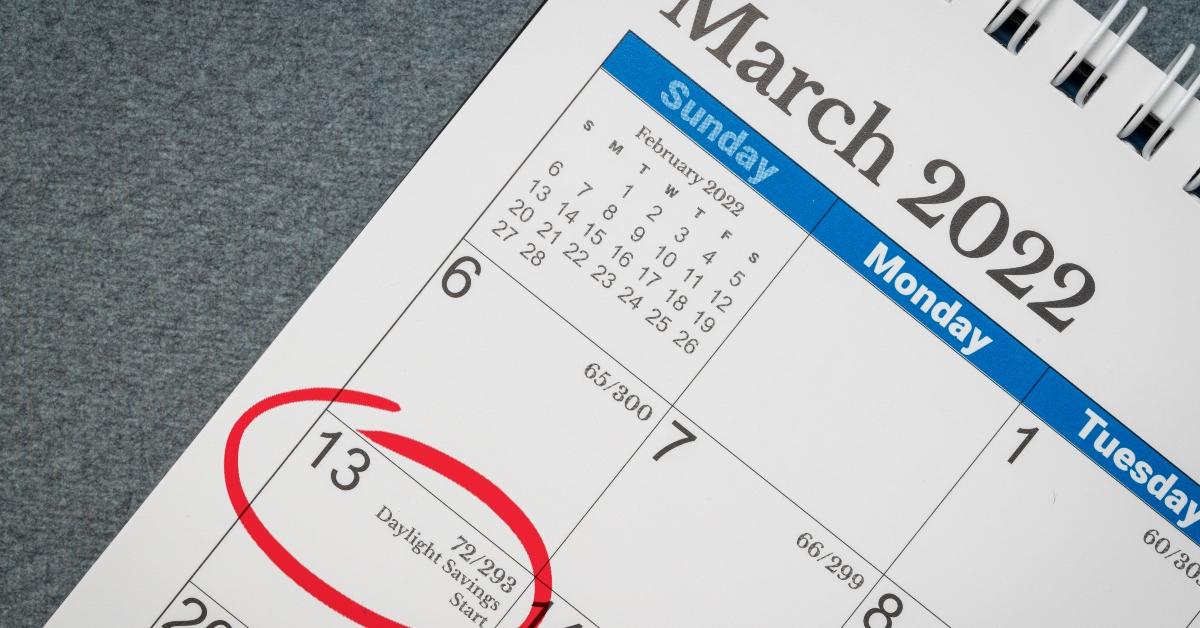Should We Get Rid of Daylight Savings Time? Many States Say Yes
Two states, Arizona and Hawaii, don’t observe daylight savings time. Many other states are also considering getting rid of the twice-yearly time change.
Feb. 27 2023, Published 2:13 p.m. ET

Every year, most states in the U.S. “fall back” in November and “spring forward” in March for daylight savings time. On March 12, 2023, we’ll set our clocks one hour ahead. Sure, you may lose an hour of sleep that day, but there will also be more hours of sunshine to enjoy.
Two states, Arizona and Hawaii, don’t observe daylight savings time. Many other states are also considering getting rid of the twice-yearly time change.

March 2022 calendar
What states are getting rid of daylight savings time?
At least 29 states have introduced legislation to change daylight savings time. Most of those states don’t want to eliminate daylight savings time, they want to make it permanent. In 2022, Colorado, Kentucky, and Mississippi approved bills in support of making daylight savings time permanent year-round.
Other states that have introduced legislation to make daylight savings time permanent are:
Alabama
Arkansas
California
Delaware
Florida
Georgia
Idaho
Louisiana
Maine
Minnesota
Montana
Nebraska
Ohio
Oklahoma
Oregon
South Carolina
Tennessee
Utah
Washington
Wyoming
New Mexico and Texas are asking voters if, in getting rid of the twice-a-year clock change, they would prefer switching to permanent standard time or permanent daylight savings time.
Can state governments get rid of daylight savings time?
Even if a state like Colorado approves a bill or resolution in support of changing daylight savings time, it still needs federal approval to do so. A state government that wants to ditch daylight savings time must provide a formal request to the U.S. Secretary of Transportation with detailed information supporting its “contention the requested change would serve the convenience of commerce.”
Many states are waiting to see if Congress will move to change daylight savings time. On March 15, 2022, the Senate approved the Sunshine Protection Act of 2021, which would make daylight savings time permanent starting in November 2023. The bill was sponsored by Senator Marco Rubio (R-Fla.).
However, the Sunshine Protection Act stalled in the House of Representatives and hasn't been approved yet.

What does permanent daylight savings mean?
If a permanent daylight saving time were to be approved, the need to change your clocks twice a year would end. The days would include more hours of sunlight. The sun would set later in the day, but it would also rise later. Mornings in November through February would remain dark for an extra hour.
Are there benefits to getting rid of daylight savings time?
Sleep experts believe the time changes involved with daylight savings can harm a person’s health and safety, Healthline reports. Losing that one hour of sleep can result in increased car accidents and heart-related issues such as strokes and heart attacks.

“My personal opinion is that DST is antiquated and definitely not sleep or circadian-friendly. This increases health and safety risks for our society with questionable economic benefits. It would be best to establish a permanent standard time,” Dr. Susheel Patil, a sleep specialist at Case Western Reserve University School of Medicine, told Healthline.
